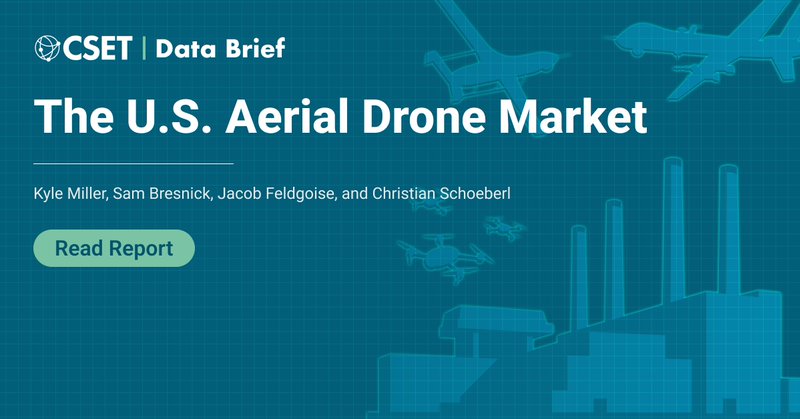
Kyle Miller
@KyauMill21
Followers
112
Following
597
Media
10
Statuses
141
🧵Most agree that open-weight AI models benefit research, but there is a lack of empirical work investigating how these benefits manifest in practice. To address this gap, we reviewed ~250 scientific publications that use open models in ways that require access to the weights
1
13
34
*Major* open source AI drop today. Can America win the Open AI race? My conversation with @natolambert and @soldni of @allen_ai about the launch of Olmo 3 00:00 – Cold Open 00:39 – Welcome & today’s big announcement 01:18 – Introducing the Olmo 3 model family 02:07 – What
4
3
23
This release has SO MUCH • New pretrain corpus, new midtrain data, 380B+ long context tokens • 7B & 32B, Base, Instruct, Think, RL Zero • Close to Qwen 3 performance, but fully open!!
Announcing Olmo 3, a leading fully open LM suite built for reasoning, chat, & tool use, and an open model flow—not just the final weights, but the entire training journey. Best fully open 32B reasoning model & best 32B base model. 🧵
8
14
156
Open model AI is a sleeping giant. Our new paper (w/ @dyuephoria) shows: • Closed models: 96% of revenue, 80% of usage • Open models: near-parity performance (and catching up faster), 6× cheaper • Many closed models are dominated by open ones - better performance & cheaper
1
3
4
A shift from cloud to edge? We took a closer look at “Local LMs” (≤20B active parameters) and found that they are: - Surprisingly capable, with 3.1× improvement since 2023 - Increasingly efficient, with 5.3x improvement since 2023 This suggests a shift from mainframe inference
4
17
77
Lastly, Andreessen Horowitz, Founders Fund, and Y Combinator have been the most active backers of identified US drone companies (measured by # of deals). These funders backed companies marketing platforms in UAS Groups 1-4, but predominantly Groups 1-3
1
2
4
Most of the companies were formed in or after 2010, which aligns with the broader growth of investments in the drone industry, as well as the development and proliferation of commercial drone technology
1
0
2
The US companies in our data are mostly privately held (62%), more than 90% of which have received financial backing. 29% have been acquired or merged, and now either operate as subsidiaries (77%) or have been absorbed into their parent companies (23%)
1
0
2
A focus on US companies that market five or more platforms reveals that some companies offer a range of platforms across UAS groups, while others specialize more in particular groups
1
1
3
Of the 222 companies (in AUVSI data) that actively market UAVs in the US, 123 are HQ’d in the US and collectively market 342 platforms (approximately 58% of the total US-marketed platforms in the data)
1
0
1
Drones are essentially flying packages of hardware, software, sensors, communications, and (at times) munitions, so there is significant diversity in the applications for which they are marketed
1
2
3
Most are dual-use platforms marketed across civil, commercial, and military sectors. Unsurprisingly, larger platforms (with more explicit military applications) are predominantly marketed to the military sectors, while smaller drones have more marketing diversity
1
0
2
We find 222 UAV developers that collectively market 593 platforms in the US. Of these platforms, 456 can be categorized into UAS Groups based on their weight and operating altitude. Most of these drones are in UAS Groups 1-3; only 33 are in Groups 4 and 5
1
1
2
🧵Our new data brief investigates the US aerial drone market using AUVSI and Pitchbook data. We cover drones actively marketed in the US, and drone manufacturers that are HQ'd in the US. Lets dig into some of the data
2
3
11
Shrinks the performance gap between closed/open and US/China, for now. Hoping for a more detailed paper on the pipeline, very impressive.
0
0
0
Big deal. Test-time scaling on the strong K2 base model (using QAT in INT4) + agentic tooling gets you Kimi K2 Thinking. It beats GPT-5 and Claude Sonnet 4.5 on HLE and BrowseComp, and is nearly on-par with SOTA performance on several other benchmarks.
🚀 Hello, Kimi K2 Thinking! The Open-Source Thinking Agent Model is here. 🔹 SOTA on HLE (44.9%) and BrowseComp (60.2%) 🔹 Executes up to 200 – 300 sequential tool calls without human interference 🔹 Excels in reasoning, agentic search, and coding 🔹 256K context window Built
1
1
1
🚀 Hello, Kimi K2 Thinking! The Open-Source Thinking Agent Model is here. 🔹 SOTA on HLE (44.9%) and BrowseComp (60.2%) 🔹 Executes up to 200 – 300 sequential tool calls without human interference 🔹 Excels in reasoning, agentic search, and coding 🔹 256K context window Built
584
2K
10K
Training LLMs end to end is hard. Very excited to share our new blog (book?) that cover the full pipeline: pre-training, post-training and infra. 200+ pages of what worked, what didn’t, and how to make it run reliably https://t.co/iN2JtWhn23
121
895
6K
Overall, the use cases enabled by open weights allow researchers to investigate a wider range of questions, explore more avenues of experimentation, and implement a wider range of techniques than if they only had access to closed models
cset.georgetown.edu
This report analyzes over 250 scientific publications that use open language models in ways that require access to model weights and derives a taxonomy of use cases that open weights enable. The...
0
0
7
Prompting models, whether open or closed, allows researchers to conduct a range of important research, including (but not limited to) assessing model performance/capabilities, safety, and alignment. But this use case is ultimately less diverse than those enabled by open weights
1
0
8








